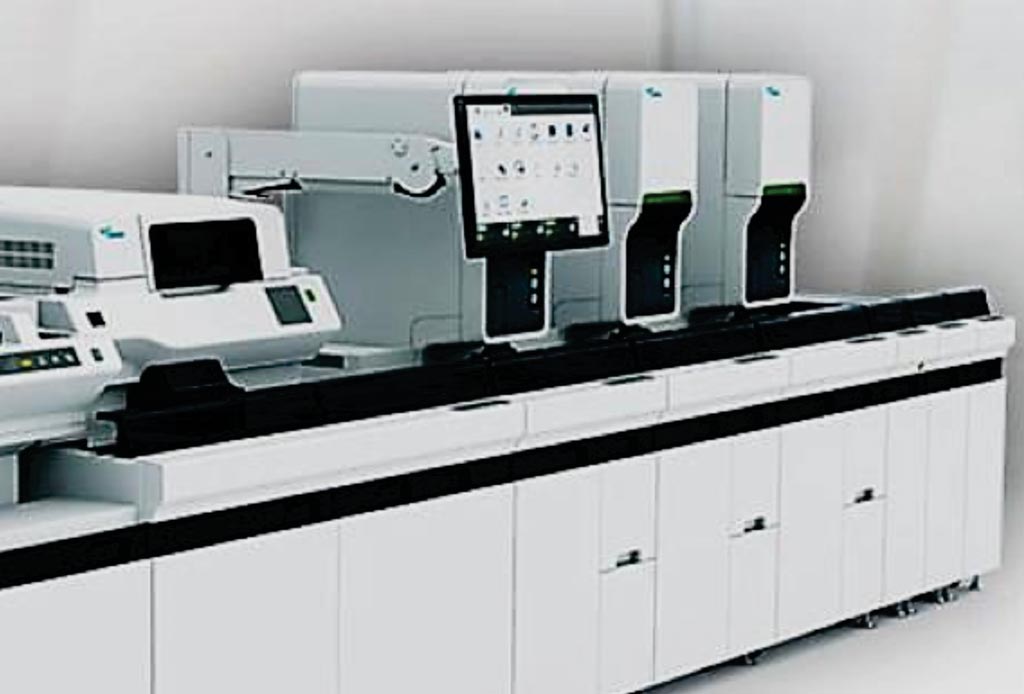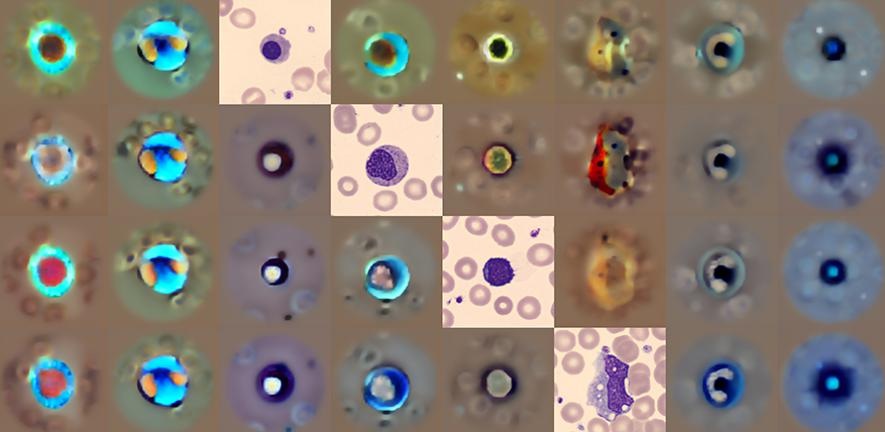Neutrophil-Lymphocyte Ratio Associated with Cancer Patient Survival
By LabMedica International staff writers
Posted on 01 Mar 2017
There is emerging evidence showing a significant relationship between overall survival (OS) in non-small cell lung cancer (NSCLC) patients and weight change during chemotherapy or chemoradiation.Posted on 01 Mar 2017
A high neutrophil/lymphocyte ratio (NLR) at baseline and at follow-up is associated with shorter survival in cancer patients and may be a surrogate for ongoing inflammation, implicated in cancer cachexia and tumor progression. Prevalence rates of cachexia differ by malignancy type, with approximately 60% of NSCLC patients experiencing it.

Image: The Sysmex XN-9000 automated hematology analyzer (Photo courtesy of Sysmex).
Scientists at the Rush University Medical Center reviewed 139 patients with NSCLC who were treated with first-line platinum doublets from June 2011 to August 2012, and none of the patients received prior therapy with an EGFR tyrosine kinase inhibitor. There were 127 patients had stage III or stage IV NSCLC, and 12 patients had either stage I or stage II disease and received adjuvant chemotherapy following surgical resection.
All patients had blood drawn in outpatient clinic on the day of evaluation and treatment for advanced NSCLC. None had active infections at the time of these visits. Neutrophil and lymphocyte counts were measured on the Sysmex XN-9000 Hematology Analyzer. Albumin was measured on the Architect Clinical Chemistry Analyzer C16000.
The scientists found that for 139 patients with median age of 68, the median NLR at baselinewas 3.6 (range 0.1898 to 30.910), at six weeks 3.11 (range 0.2703 to 42.11), and at 12 weeks 3.52 (range 0.2147 to 42.93). Higher NLR at baseline, six and 12 weeks were associated with decreased OS (baseline: Hazard ratio (HR) 1.06; 6 weeks: HR 1.0; 12 weeks: HR 1.05.). When the serial measurements of NLR measured longitudinally at baseline, six and 12 weeks are considered as a time-dependent covariate, a Cox Potential Hazard analysis continued to support its strongly significant association with decreased OS. Using a cutoff of NLR greater than 5, there was a significant association between progressive disease and NLR greater than 5 at six weeks and 12 weeks.
The authors concluded that it is likely that NLR is a surrogate for ongoing inflammation, and that inflammation may be a linchpin that links tumor progression with cachexia and overall survival. High baseline and progressive increases in NLRs are associated with progressive disease, inferior OS and weight loss in NSCLC patients. The study was published on February 16, 2017, in the journal BMC Cancer.














